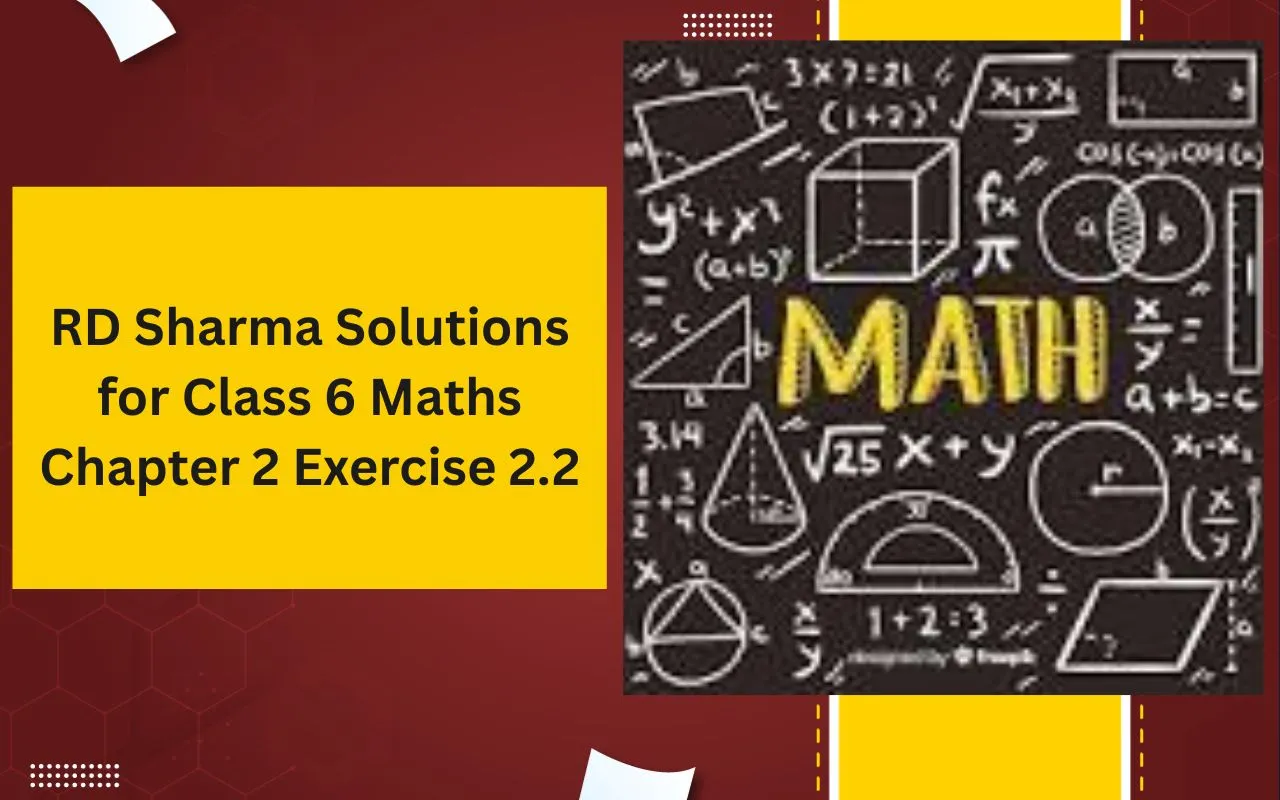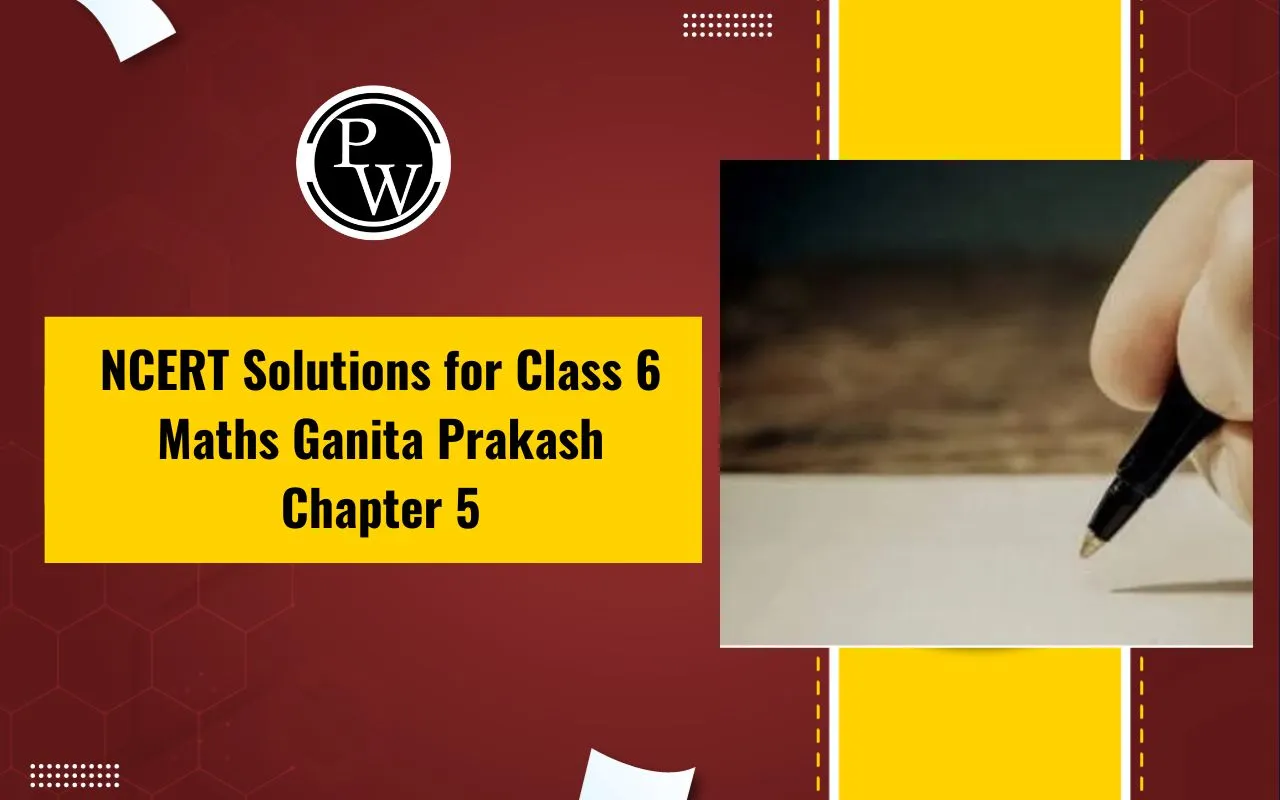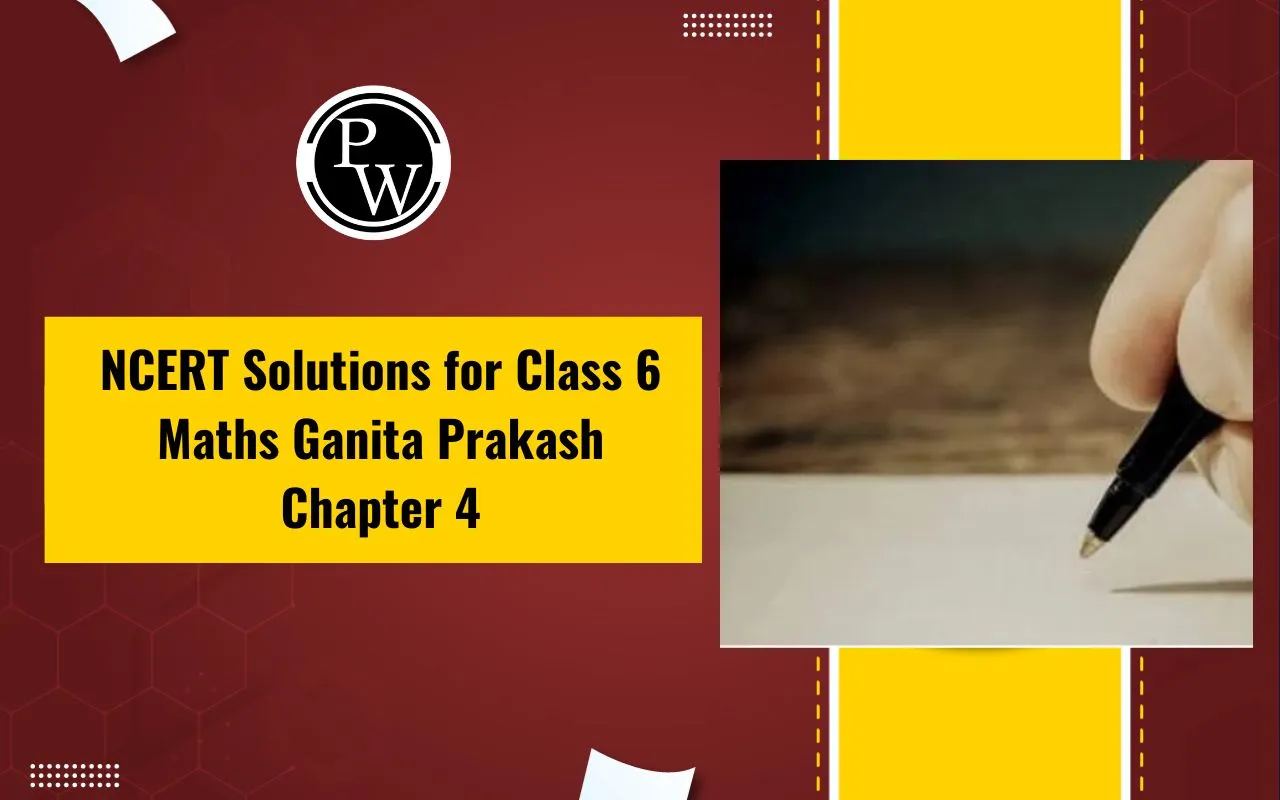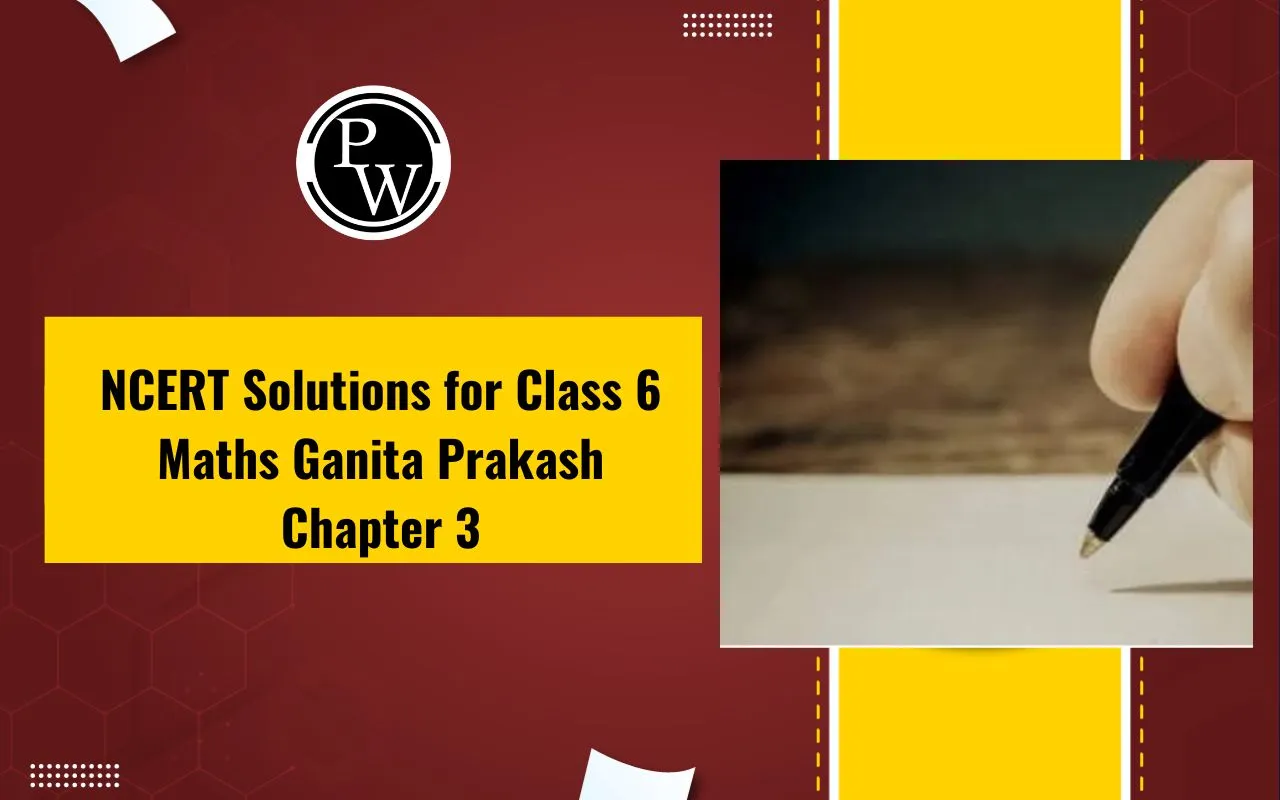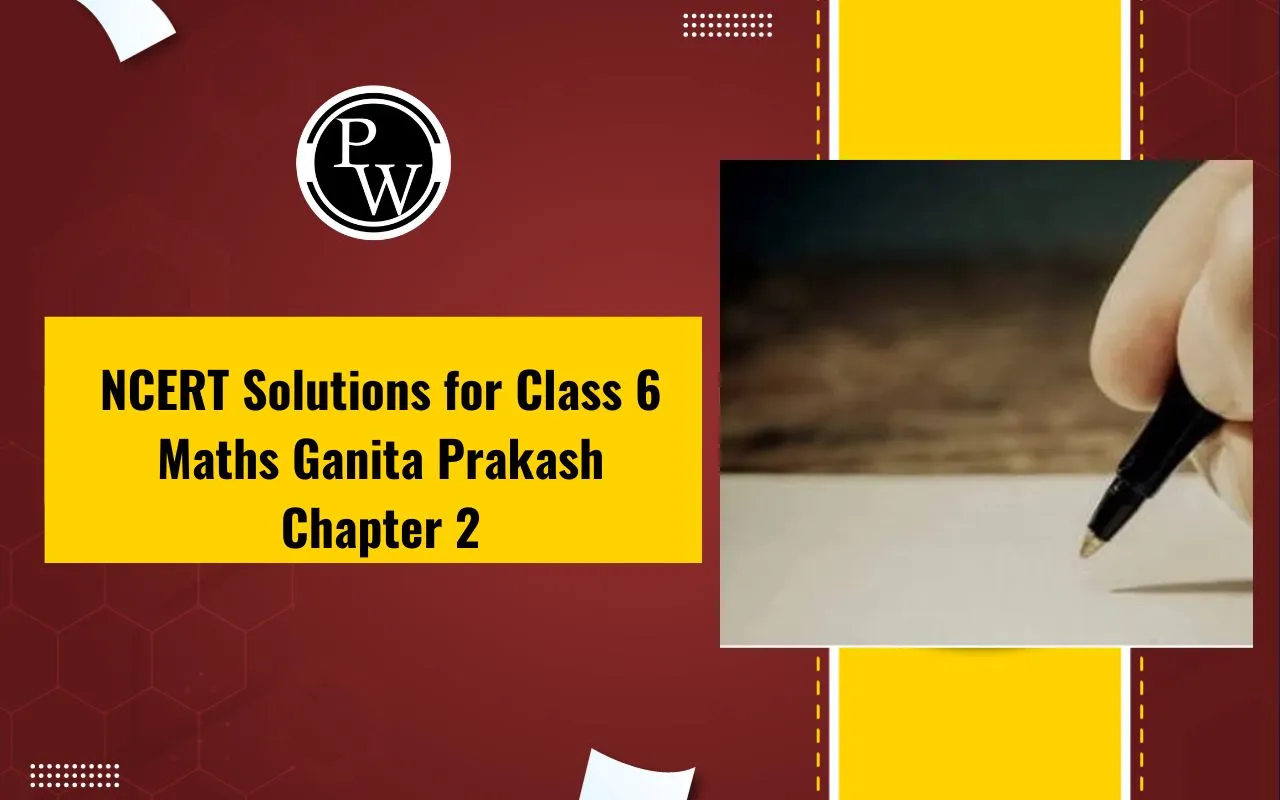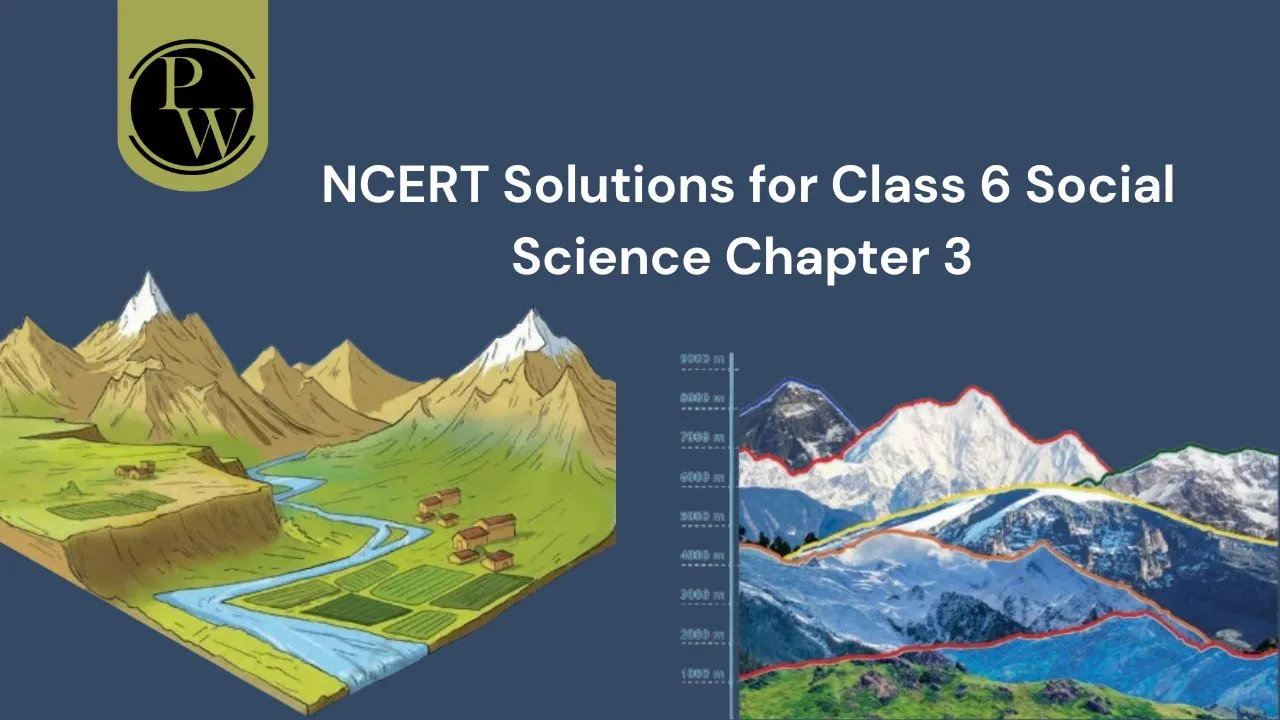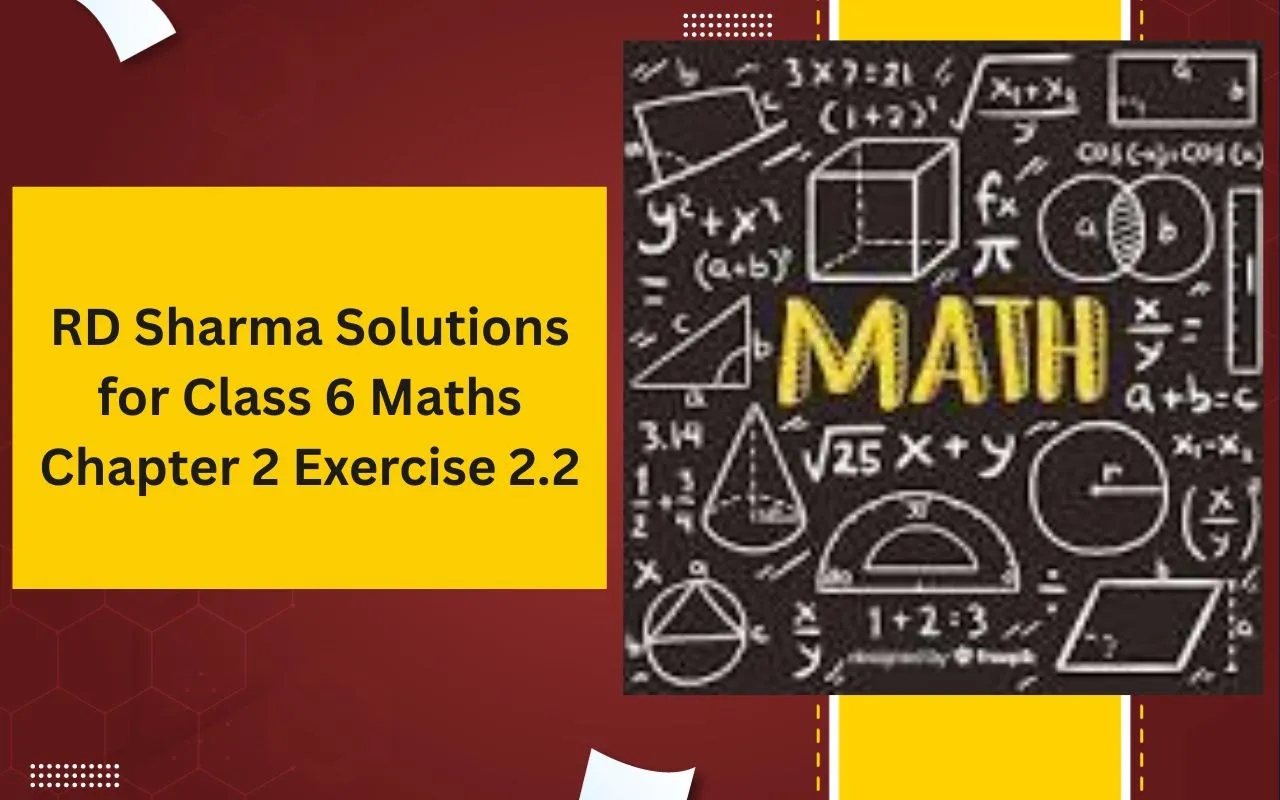
RD Sharma Solutions for Class 6 Maths Chapter 2 Exercise 2.3: RD Sharma Solutions for Class 6 Maths Chapter 2 Exercise 2.3 provide a clear and structured approach to understanding numbers.
This exercise focuses on whole numbers' properties, including their addition and multiplication use. Aligned with the latest exam pattern and CBSE syllabus, these solutions help students strengthen their foundation in mathematics.
Practicing these problems enhances problem-solving skills and builds confidence for exams. Many questions are designed similarly to those in previous year papers, making it a valuable resource for exam preparation. These step-by-step solutions ensure conceptual clarity and better retention.
What is Covered in Playing with Numbers Exercise 2.3?
Below, we have provided the topics that students will learn in this exercise -
-
Closure property of addition and multiplication
-
Commutative property of addition and multiplication
-
Associative property of addition and multiplication
-
Distributive property of multiplication over addition
-
Identity element for addition (0) and multiplication (1)
-
Patterns related to operations on whole numbers
-
Application-based problems using these properties
RD Sharma Solutions for Class 6 Chapter 2 Playing with Numbers Exercise 2.3
RD Sharma Solutions for Class 6 Chapter 2 Playing with Numbers Exercise 2.3 provide clear explanations to help students understand the properties of numbers. These solutions follow the latest syllabus. Below are the detailed solutions for Exercise 2.3.
1. What are prime numbers? List all primes between 1 and 30.
Solution:
A number is called a prime number if it has no factor other than 1 and the number itself.
For example 2, 3, 5, 7, 11 and 13 are prime numbers.
The list of primes between 1 and 30 are
2, 3, 5, 7, 11, 13, 17, 19, 23 and 29.
2. Write all prime numbers between:
(i) 10 and 50
(ii) 70 and 90
(iii) 40 and 85
(iv) 60 and 100
Solution:
(i) The prime numbers between 10 and 50 are
11, 13, 17, 19, 23, 29, 31, 37, 41, 43 and 47.
(ii) The prime numbers between 70 and 90 are
71, 73, 79, 83 and 89.
(iii) The prime numbers between 40 and 85 are
41, 43, 47, 53, 59, 61, 67, 71, 73, 79 and 83.
(iv) The prime numbers between 60 and 100 are
61, 67, 71, 73, 79, 83, 89 and 97.
3. What is the smallest prime number? Is it an even number?
Solution:
2 is the smallest prime number.
We know that 2 is an even prime number since it is divisible by 2.
4. What is the smallest odd prime? Is every odd number a prime number? If not, give an example of an odd number which is not prime.
Solution:
3 is the smallest odd prime number.
No, every odd number is not a prime number.
Example: 9 is an odd number having factors 1, 3 and 9 and is not a prime number.
5. What are composite numbers? Can a composite number be odd? If yes, write the smallest odd composite number.
Solution:
A number is called a composite number if it has at least one factor other than 1 and the number itself.
Example: 4, 6, 8, 9, 10 and 15 are composite numbers.
Yes, a composite number can be odd and 9 is the smallest odd number.
6. What are twin-primes? Write all pairs of twin-primes between 50 and 100.
Solution:
Two prime numbers are known as twin-primes if there is only one composite number between them.
Example: 3, 5; 5, 7; 11, 13; 17, 19; 29, 31; 41, 43; 59, 61 and 71, 73 are the pairs of twin-primes between 1 and 100.
The pairs of twin-primes between 50 and 100 are
59, 61 and 71, 73.
7. What are co-primes? Give examples of five pairs of co-primes. Are co-primes always prime? If no, illustrate your answer by an example.
Solution:
Two numbers are said to be co-prime if they do not have a common factor other than 1.
2, 3; 3, 4; 4, 5; 5, 6; 6, 7 are the examples of five pairs of co-primes.
No. 15, 16 are co-prime but both of the numbers are not prime.
8. Which of the following pairs are always co-prime?
(i) two prime numbers
(ii) one prime and one composite number
(iii) two composite numbers
Solution:
(i) Two prime numbers are always co-prime to each other.
For example: The numbers 7 and 11 are co-prime to each other.
(ii) One prime and one composite number are not always co-prime.
For example: The numbers 3 and 21 are not co-prime to each other.
(iii) Two composite numbers are not always co-prime to each other.
For example: 4 and 6 are not co-prime to each other.
9. Express each of the following as a sum of two or more primes:
(i) 13
(ii) 130
(iii) 180
Solution:
(i) We know that
The number 13 can be written as
13 = 3 + 3 + 7 which is the sum of two or more primes.
(ii) We know that
The number 130 can be written as
130 = 59 + 71 which is the sum of two or more primes.
(iii) We know that
The number 180 can be written as
180 = 79 + 101 which is the sum of two or more primes.
10. Express each of the following numbers as the sum of two odd primes:
(i) 36
(ii) 42
(iii) 84
Solution:
(i) We know that
The number 36 can be written as
36 = 7 + 29 which is the sum of two odd primes
(ii) We know that
The number 42 can be written as
42 = 5 + 37 which is the sum of two odd primes
(iii) We know that
The number 84 can be written as
84 = 17 + 67 which is the sum of two odd primes
11. Express each of the following numbers as the sum of three odd prime numbers:
(i) 31
(ii) 35
(iii) 49
Solution:
(i) We know that
The number 31 can be written as
31 = 5 + 7 + 19 which is the sum of three odd prime numbers
(ii) We know that
The number 35 can be written as
35 = 5 + 7 + 23 which is the sum of three odd prime numbers
(iii) We know that
The number 49 can be written as
49 = 3 + 5 + 41 which is the sum of three odd prime numbers
12. Express each of the following numbers as the sum of twin primes:
(i) 36
(ii) 84
(iii) 120
Solution:
(i) We know that
The number 36 can be written as
36 = 17 + 19 which is the sum of twin primes
(ii) We know that
The number 84 can be written as
84 = 41 + 43 which is the sum of twin primes
(iii) We know that
The number 120 can be written as
120 = 59 + 61 which is the sum of twin primes
13. Find the possible missing twins for the following numbers so that they become twin primes:
(i) 29
(ii) 89
(iii) 101
Solution:
(i) We know that 27 and 31 are the possible missing twins for 29.
31 is a prime number and 27 is not a prime number
Therefore, 31 is the missing twin.
(ii) We know that 87 and 91 are the possible missing twins for 89
Both the numbers are not prime.
Therefore, 89 has no twin.
(iii) We know that 99 and 103 are the possible missing twins for 101
103 is a prime number and 99 is not a prime number
Therefore, 103 is the missing twin.
14. A list consists of the following pairs of numbers:
(i) 51, 53; 55, 57; 59, 61; 63, 65; 67, 69; 71, 73
Categorize them as pairs of
(i) co-primes
(ii) primes
(iii) composites
Solution:
(i) Two numbers are said to be co-prime if they do not have a common factor other than 1.
Therefore, all the given pairs of numbers are co-primes.
(ii) A number is called a prime number if it has no factor other than 1 and the number itself.
Therefore, 59, 61; 71, 73 are pairs of prime numbers.
(iii) A number is called a composite number if it has at least one factor other than 1 and the number itself.
Therefore, 55, 57; 63, 65 are pairs of composite numbers.
15. For a number, greater than 10, to be prime what may be the possible digit in the units place?
Solution:
For a number, greater than 10, the possible digit in the units place to be prime can be 1, 3, 7 or 9.
For example: 11, 13, 17 and 19 are prime numbers which are greater than 10.
16. Write seven consecutive numbers less than 100 so that there is no prime number between them.
Solution:
The seven consecutive composite numbers less than 100 so that there is no prime number between them are
90, 91, 92, 93, 94, 95 and 96.
17. State true (T) or false (F):
(i) The sum of primes cannot be a prime.
(ii) The product of primes cannot be a prime.
(iii) An even number is composite.
(iv) Two consecutive numbers cannot be both primes.
(v) Odd numbers cannot be composite.
(vi) Odd numbers cannot be written as sum of primes.
(vii) A number and its successor are always co-primes.
Solution:
(i) False. 2 + 3 = 5 is a prime number.
(ii) True. The product of primes is a composite number.
(iii) False. Even number 2 is not composite.
(iv) False. The numbers 2 and 3 are consecutive and prime numbers.
(v) False. 9 is an odd number and is composite having factors 1, 3 and 9.
(vi) False. 9 is an odd number and the sum of prime number 7 + 2 = 9.
(vii) True. A number and its successor have only one common factor.
18. Fill in the blanks in the following:
(i) A number having only two factors is called a ……….
(ii) A number having more than two factors is called a …………
(iii) 1 is neither ………. Nor ………
(iv) The smallest prime number is ………..
(v) The smallest composite number is ……….
Solution:
(i) A number having only two factors is called a prime number.
(ii) A number having more than two factors is called a composite number.
(iii) 1 is neither prime nor composite.
(iv) The smallest prime number is 2.
(v) The smallest composite number is 4.
RD Sharma Solutions for Class 6 Maths Chapter 2 Exercise 2.3 PDF Download
RD Sharma Solutions for Class 6 Maths Chapter 2 Exercise 2.3 are essential for building a strong foundation in the topic of Whole Numbers. These solutions are prepared as per the latest exam pattern and CBSE Class 6 syllabus to help students understand key concepts easily.
Practicing these step-by-step solutions can improve accuracy and boost confidence in exams. Questions are designed to reflect previous year papers for better preparation. Below, we have provided the PDF download of Exercise 2.3 solutions for quick access and offline study.
RD Sharma Solutions for Class 6 Maths Chapter 2 Exercise 2.3
Study without using the internet
Benefits of Using RD Sharma Class 6 Maths Chapter 2 Exercise 2.3
Here are the benefits of using RD Sharma Class 6 Maths Chapter 2 Exercise 2.3 solutions:
-
Provides a clear understanding of whole number properties like closure, commutativity, associative, and distributive laws
-
Follows the latest Class 6 Maths syllabus and exam pattern
-
Step-by-step solutions help students grasp each concept easily
-
Enhances accuracy and speed in solving mathematical problems
-
Builds a strong foundation for higher-level math topics
-
Useful for revision before exams or class tests
-
Includes question types similar to those found in previous year papers for better exam preparation
RD Sharma Solutions for Class 6 Chapter 2 Playing with Numbers Exercise 2.3 FAQs
What is the focus of Exercise 2.3?
Is Exercise 2.3 important for exams?
Can these solutions help in exam preparation?
What is the smallest prime number?

